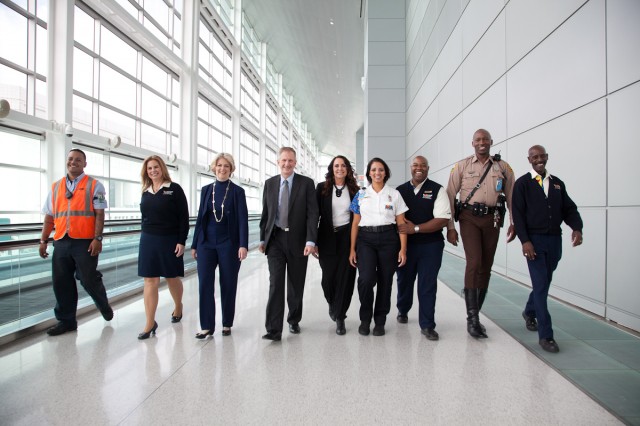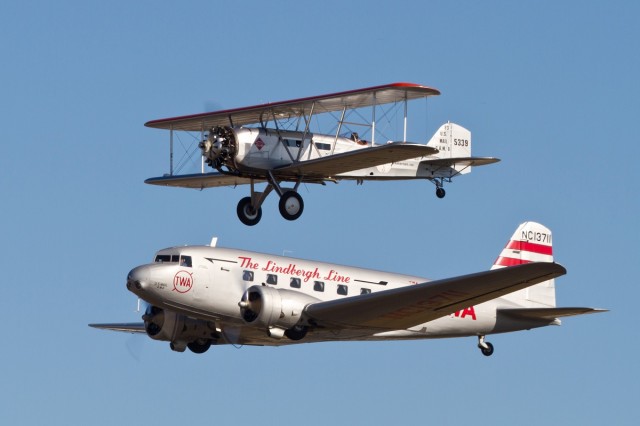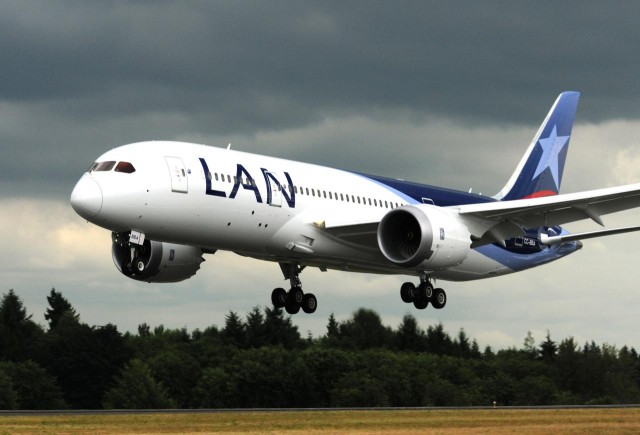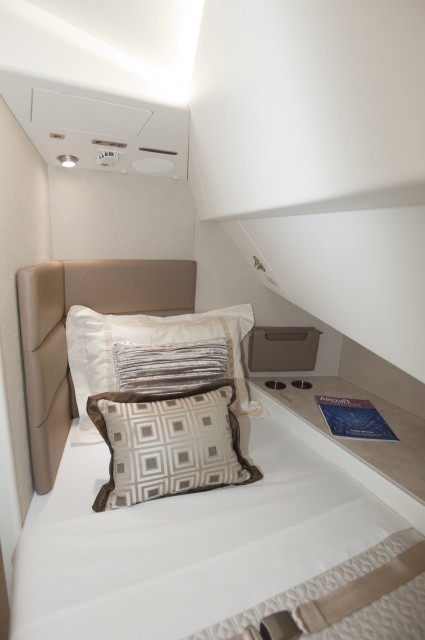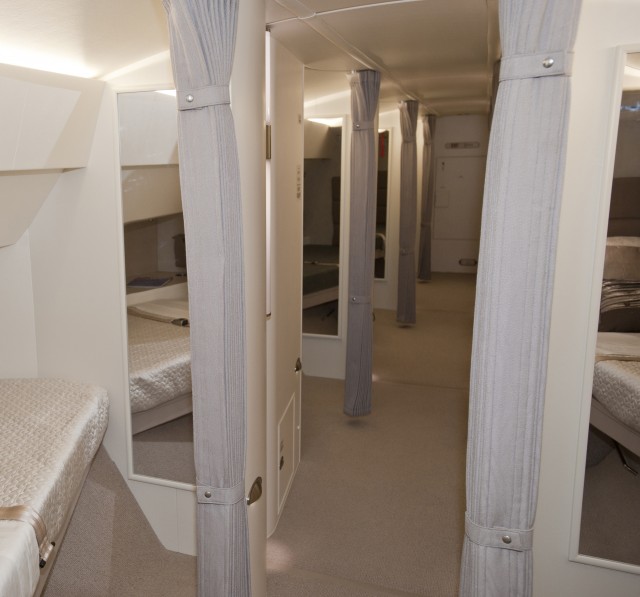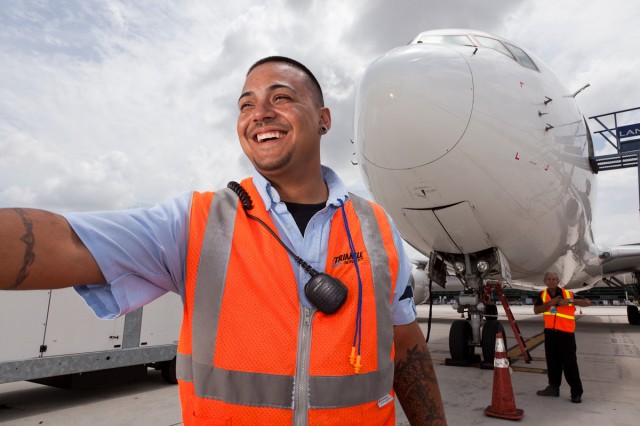
Airplanes, airports and smiles. How could you not like Airport 24/7: Miami? This is Albert Cordeschi, who is the “ramp ringleader” in the show.
When my good buddy Chris Sloan (who runs the website Airchive.com) asked me to check out a new airport show he created and is the Executive Producer of — how could I say no? The new series on the Travel Channel, Airport 24/7: Miami, is about airplanes and airports, so I had a feeling I might like what I see. The show gives a unique, behind-the-scenes look at Miami International Airport (MIA).
With the airport seeing about 40 million passengers per year, there are plenty of opportunities for shenanigans. The show is unapologetic talking about the risk of a terrorist threat or calling out passengers for not being the brightest by having a gun in their carry-on bag. It is refreshing since many reality TV shows (and I do not watch TV often) seem watered down and poorly acted.
The show does a well-rounded job highlighting what airport operations is all about. In the first episode, Lufthansa tries to turn around their Airbus A380 from Frankfurt in 140 minutes, which is not much time for the world’s largest airliner. It becomes more challenging when Customs and Border Protection randomly decides to take 50 minutes to search the aircraft, causing delays. Of course, it is the airline that has to communicate the delay to the upset passengers.
I very much enjoyed the show and cannot wait to see more episodes. I did had a few questions for Chris after viewing the show and I want to share our conversation:
AirlineReporter (AR): Wasn’t there another show like this previous?
Chris Sloan (CS): There was a BBC show called ’œAirport’ that ran from 1996-2004. It was a tremendous hit, a top 20 show in the UK. Some airport and airline officials even became national stars. There was a recent show that followed Southwest Airlines on TLC as well, but it was focused on 1 airline’s ground and terminal staff at different airports around the Southwest system. I love that show, but our show ’œAirport 24/7: Miami’ is very different. There have been other 1 off documentaries behind the scenes of an airport, but ours is very different as we lived there for 6 months and are as focused on the human drama and key members of the airport team from many areas: security, airlines, cargo, ground ops, police, fire, terminal ops, even the Deputy Director of the Airport. We go much, much more behind the scenes than other shows.
AR: Why MIA?
CS: I love Miami International Airport and grew up here. I chose it for a number of reasons. First, it is the #2 international airport in the U.S. #2 in international freight. Over 100,000 passengers pass through here daily. Second, it is incredibly diverse in terms of the types of stories that can be told here as it is a major domestic and international hub for tourists and businesses alike ’“ it’s the Gateway to Latin America. Third, MIA had a reputation up until recently as a difficult, outdated, and challenging airport that people went out of their way to avoid.
There was a perception that it was a third world airport in terms of facilities and operations. Though not your standard, domestic airport, MIA really is a totally different place and I wanted to tell that story. It has magnificent new physical terminals, it was TSA’s Airport of the Year, there is outstanding customer service by the staff (they are very focused on this) – it is a very different and improved airport from the MIA of the 1990s.
It also helped that I had existing relationships with the airport. They knew I loved commercial aviation via my site, Airchive.com, and was out to produce a fair, authentic show ’“ not a hatchet job.
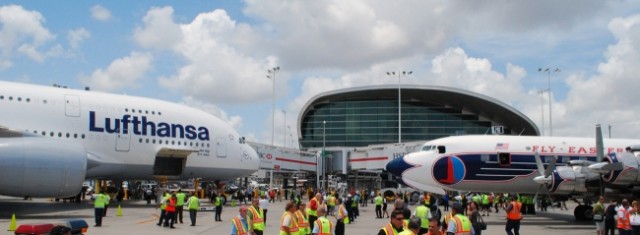
One of the times where Chris and my world’s collided: Lufthansa’s inaugural A380 flight to MIA. Photo by Chris Sloan.
AR: How receptive were airlines (I mostly saw Lufthansa in the pilot episodes) in participating in the show?
CS: Frankly and understandably, not every airline was receptive. Many airlines in this day and age are press shy or want to take a wait and see approach. That said, Lufthansa, Air Canada, Cayman, LAN, and a number of others cooperated. Other airlines have come to us wanting to participate if Travel Channel orders season 2.
AR: What was the biggest challenge for getting the show made?
CS: It’s the toughest show I have ever produced. MIA is very extensive in scope, size, and operations. Anything, and I mean anything can and does happen at anytime. We had 14 crew covering the airport 7 days a week nearly 24/7. Still, with all of the access and communications, getting to an individual event can be challenging to cover it. We also have to coordinate with many agencies and companies in an airport. We have incredible access, but we have to be sensitive to not giving away anything that could constitute a compromise in security or procedures. Many agencies had to review what we produced and edited, however none sought editorial control which was refreshing. We had an incredible crew, producing team, and support most importantly from the airport and aforementioned agencies which made this possible.
AR: What can viewers expect to see in future episodes?
CS: People won’t believe stories we have coming up: The Airport’s Fuel farm explosion and consequently disrupted operations for weeks, a near riotous reaction to an airline’s mechanical problems stranding passengers for days, a very unusual airplane scrapping operation that occurred when an airline doesn’t pay its bills, unusual things left in lost and found (and I do mean unusual), the airport’s response to a potential terrorist event, how the airport deals with the inaugural flight of a new airline while dealing with the simultaneous arrival of Air Force One, behind-the-scenes of the very unique Cuban flights, plus some really quirky funny stories that can only happen in Miami.
Be sure to mark your calendar, grab your popcorn (or airline peanuts) and catch the premier on Tuesday, October 2nd at 9pm (ET/PT) on the Travel Channel and then at the same time at the next six Tuesdays. Also, if a TV-movie is ever made about me (uh huh), I will be sure that Chris is producing the movie — I just hope it doesn’t end up being on the Lifetime Channel.
SEE A VIDEO PREVIEW OF THE SHOW
The new series for the Travel Channel show, Airport 24/7: Miami, is about airplanes and airports, so I had a feeling I might like what I see. The show gives a unique, behind-the-scenes look at Miami International Airport (MIA).
